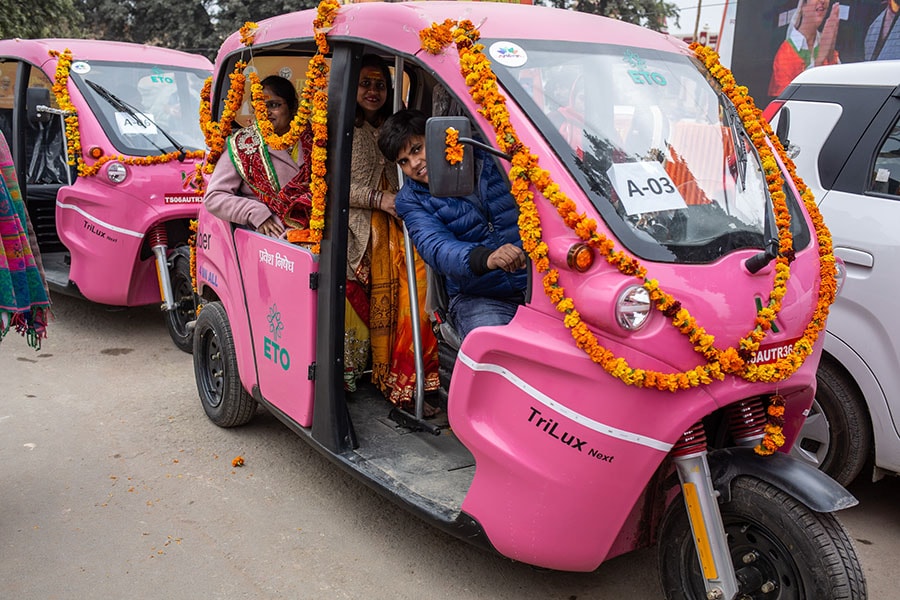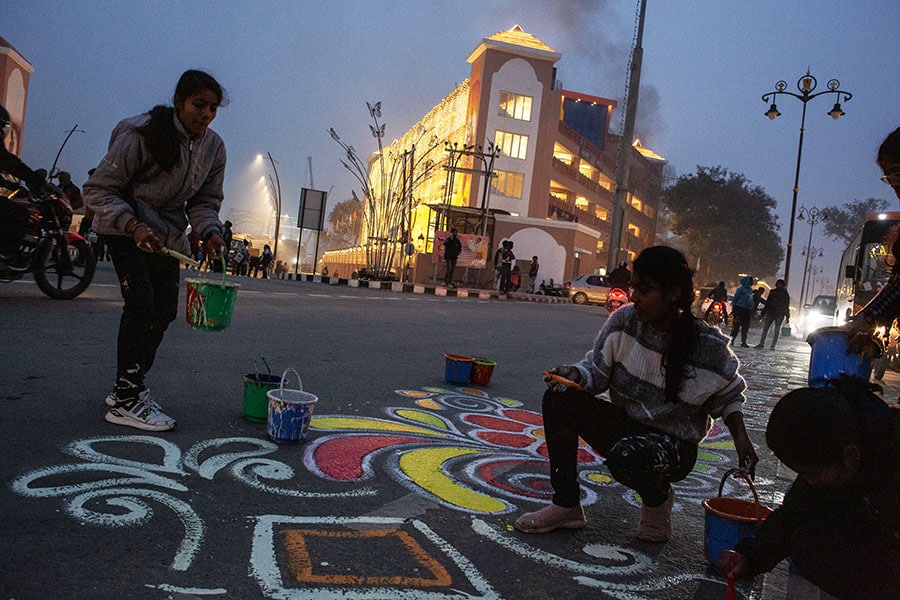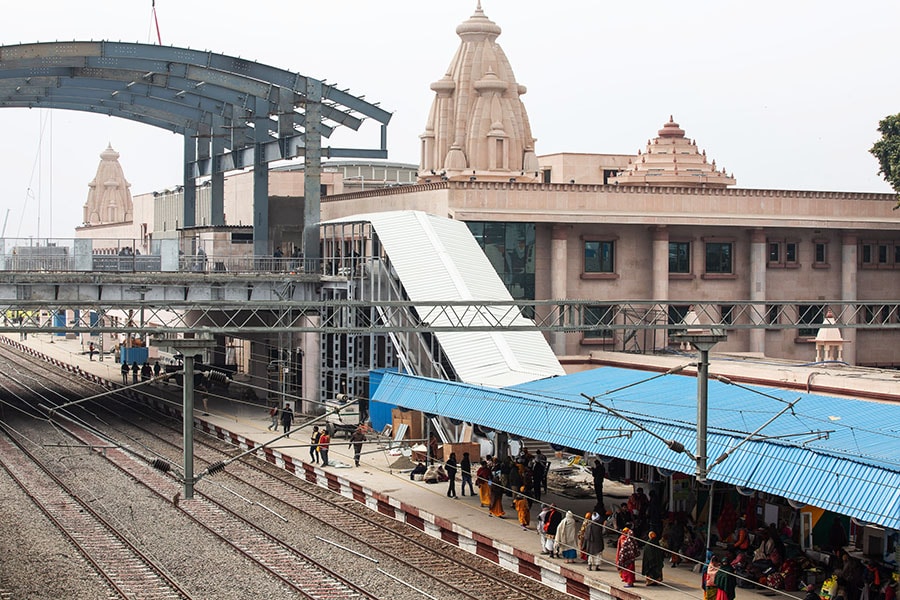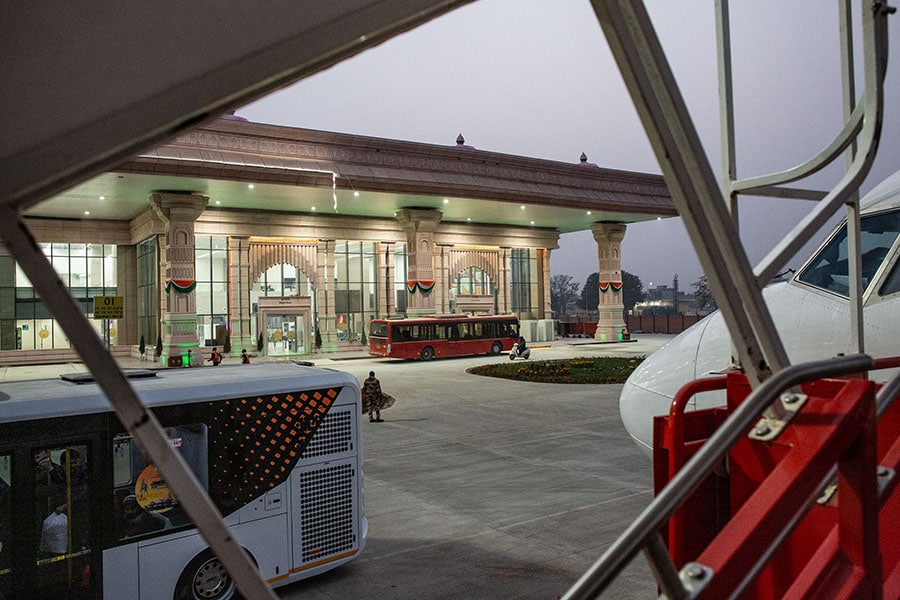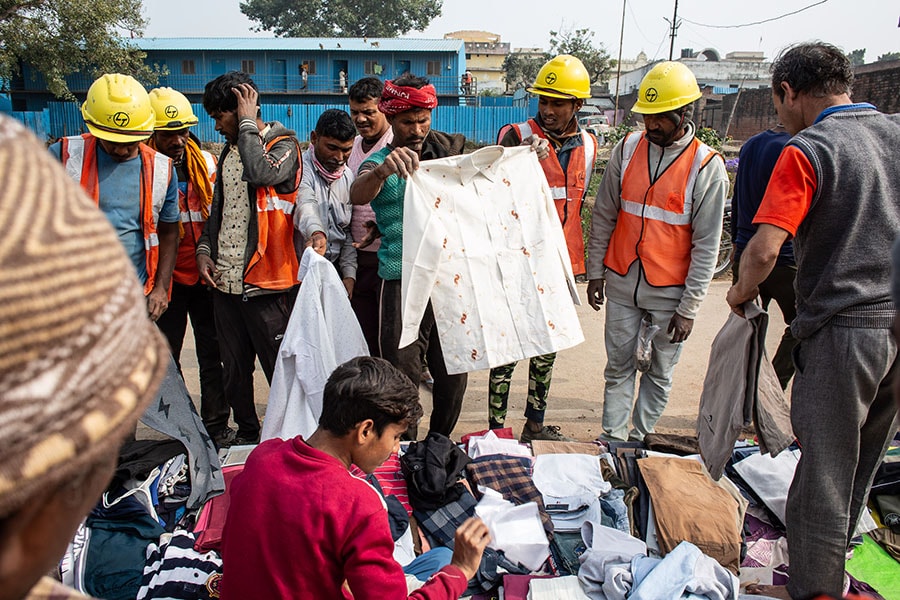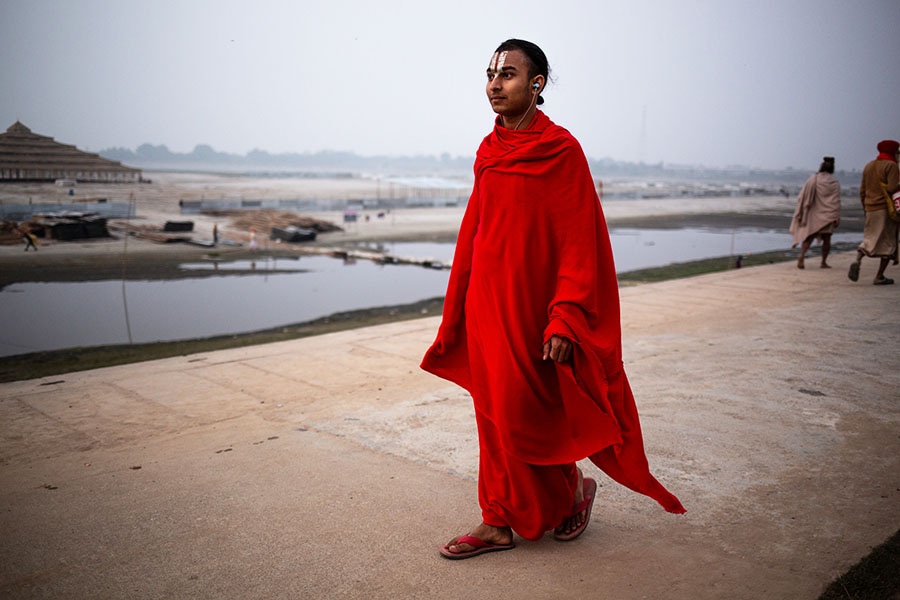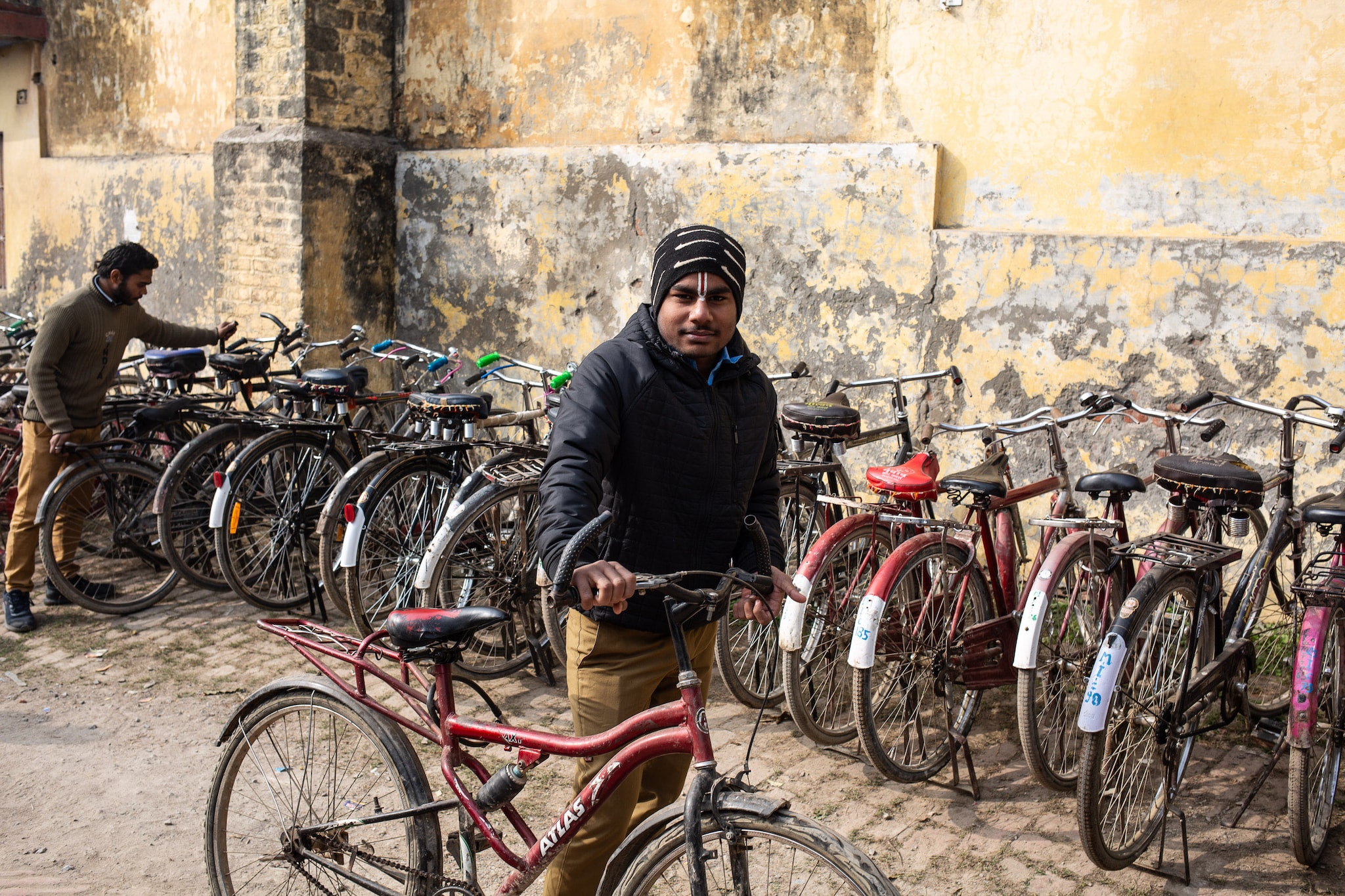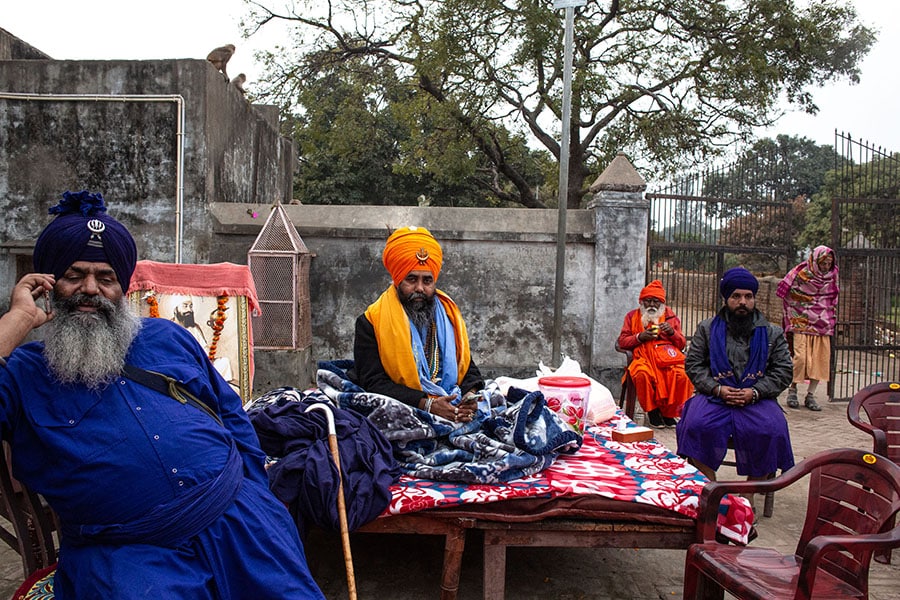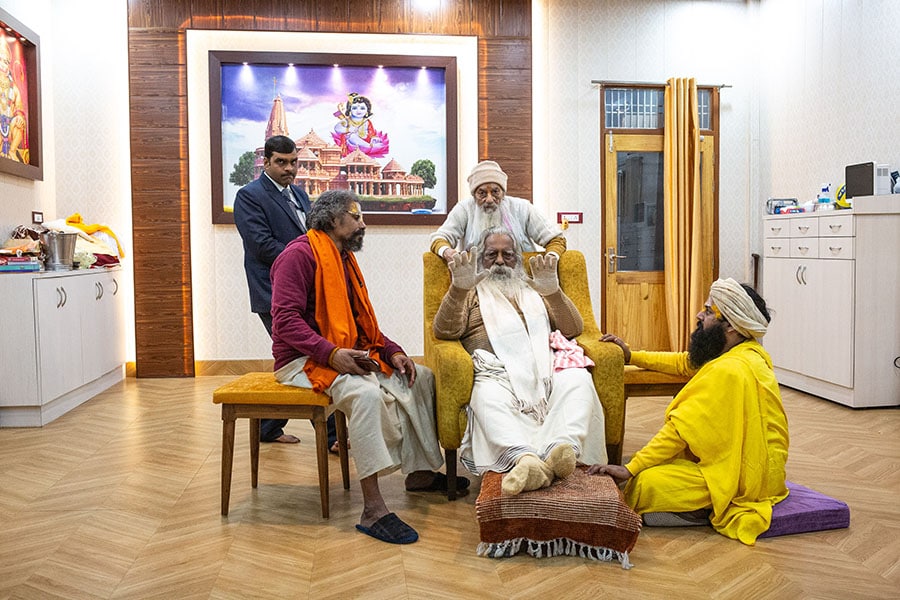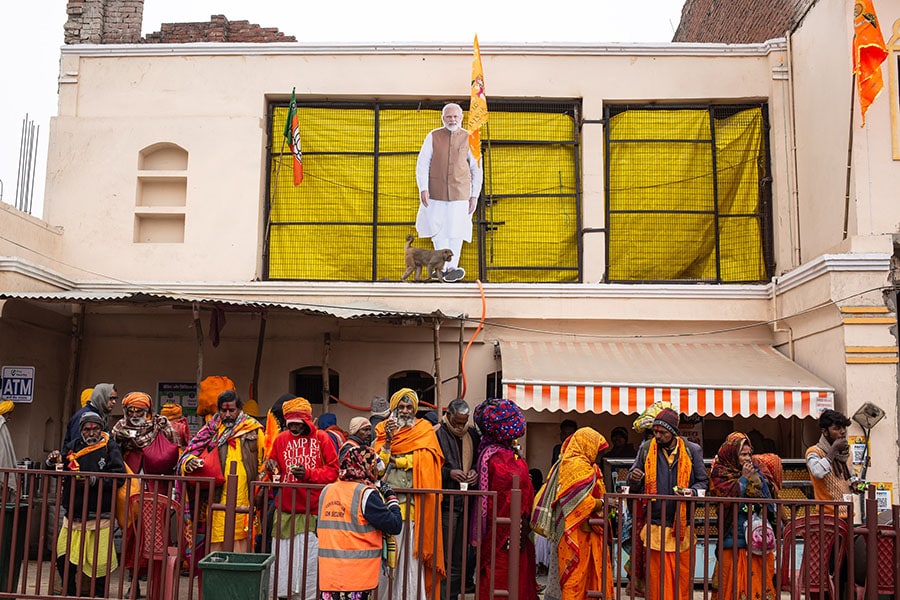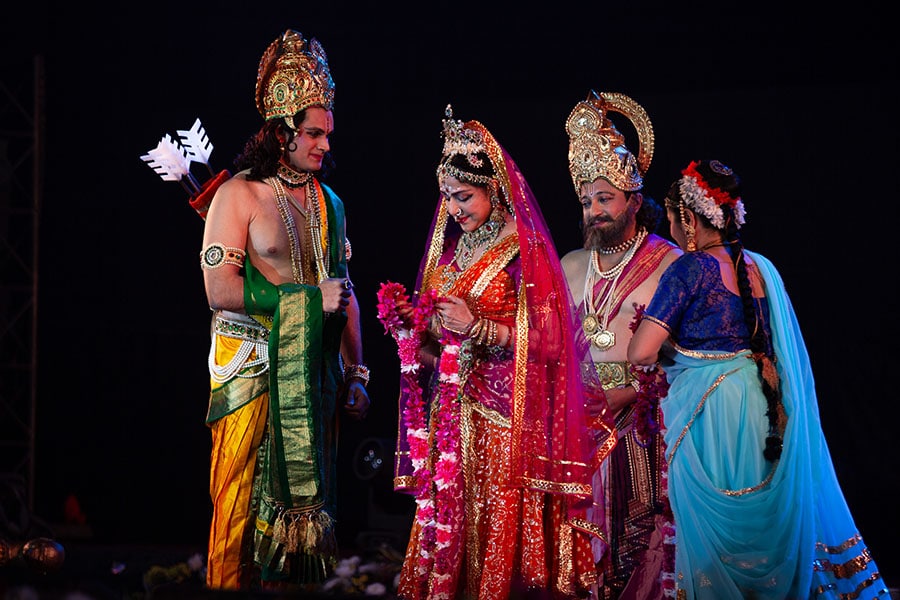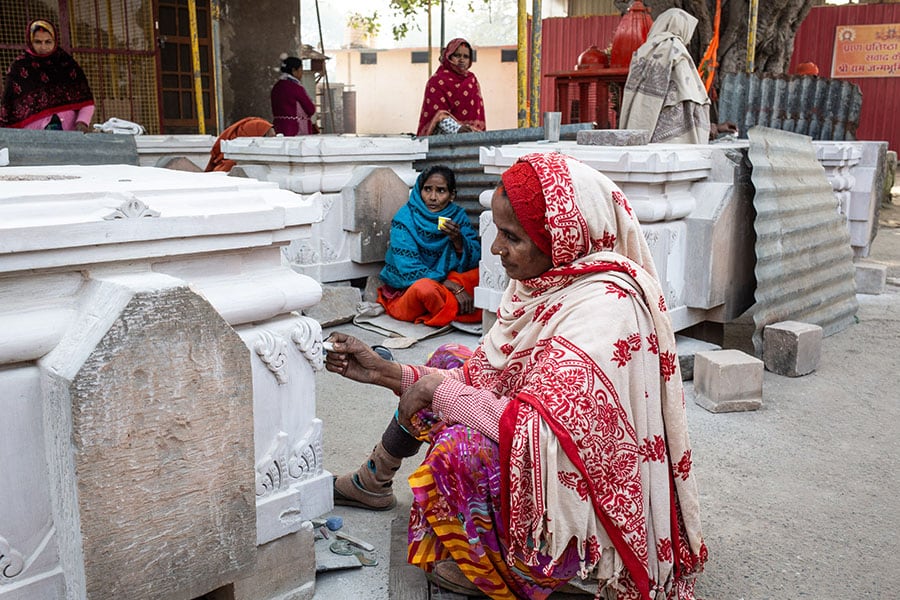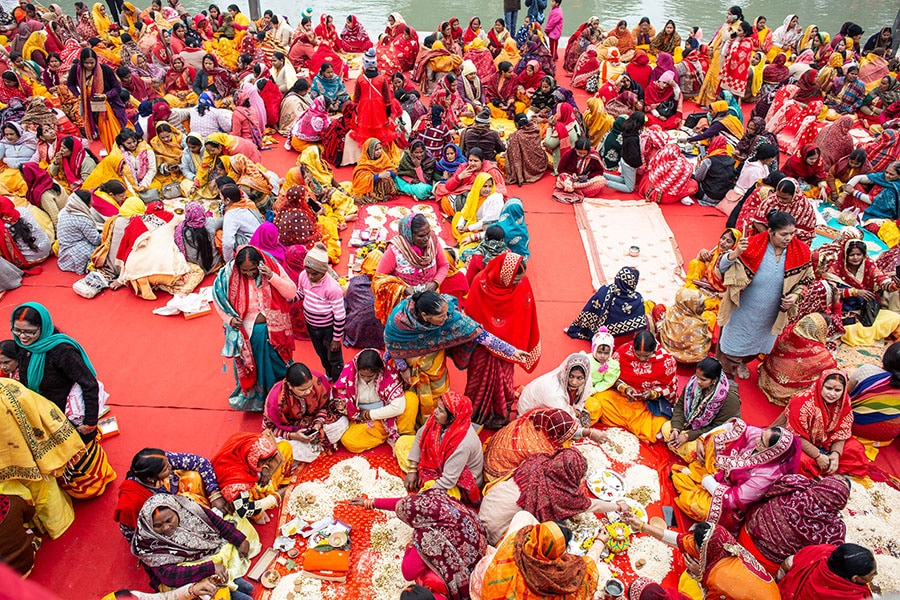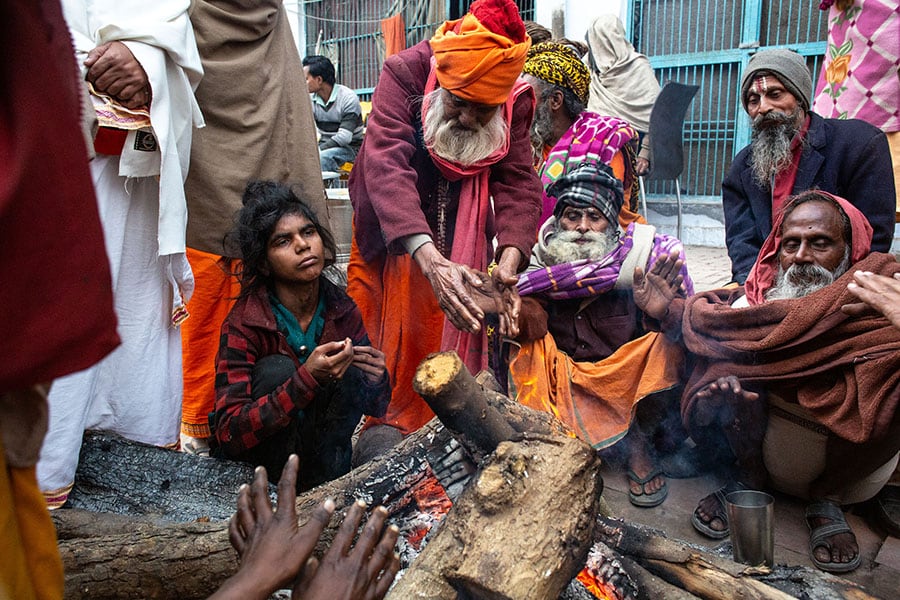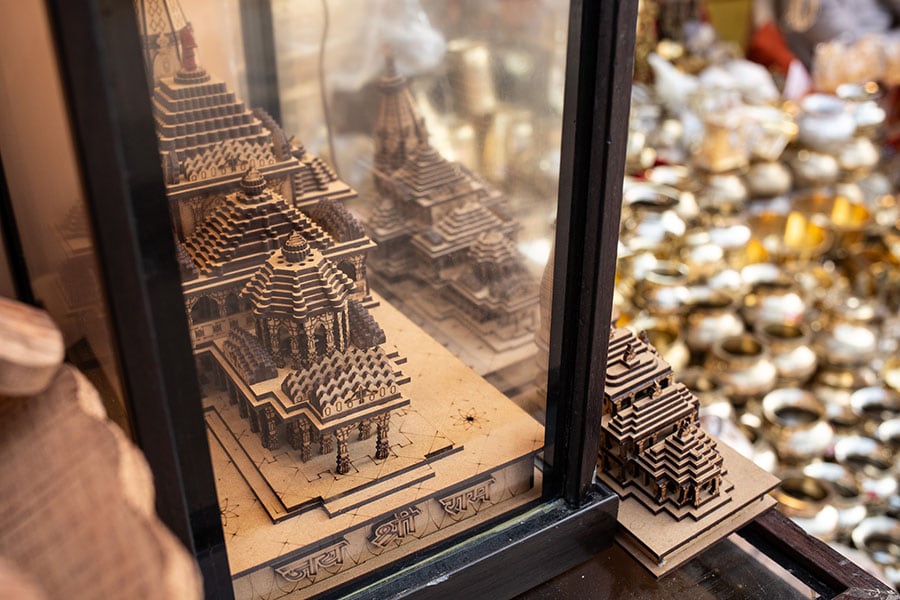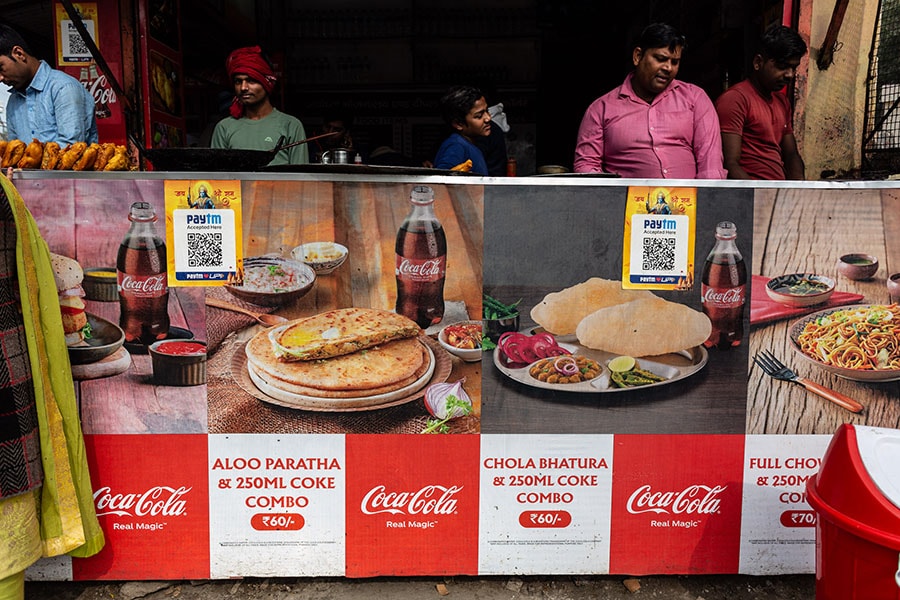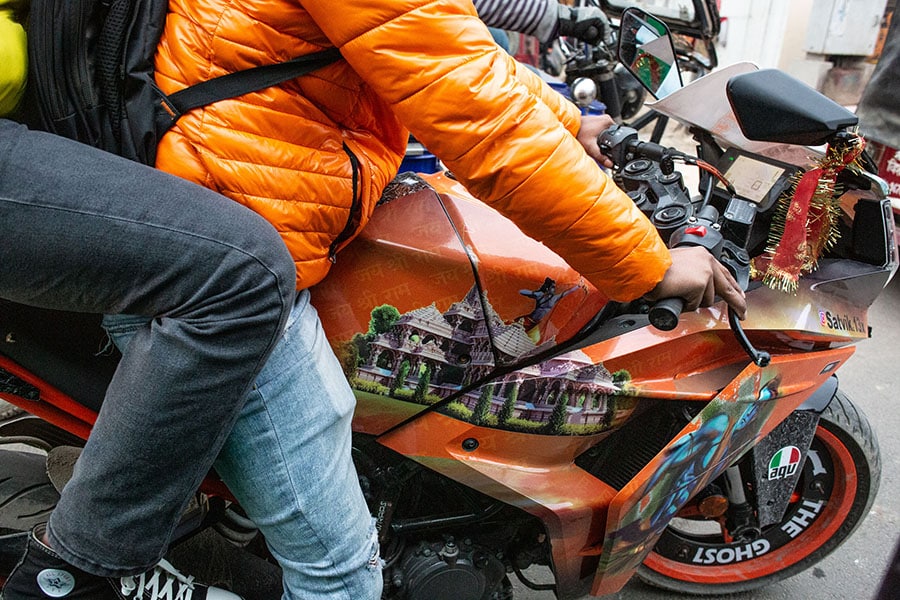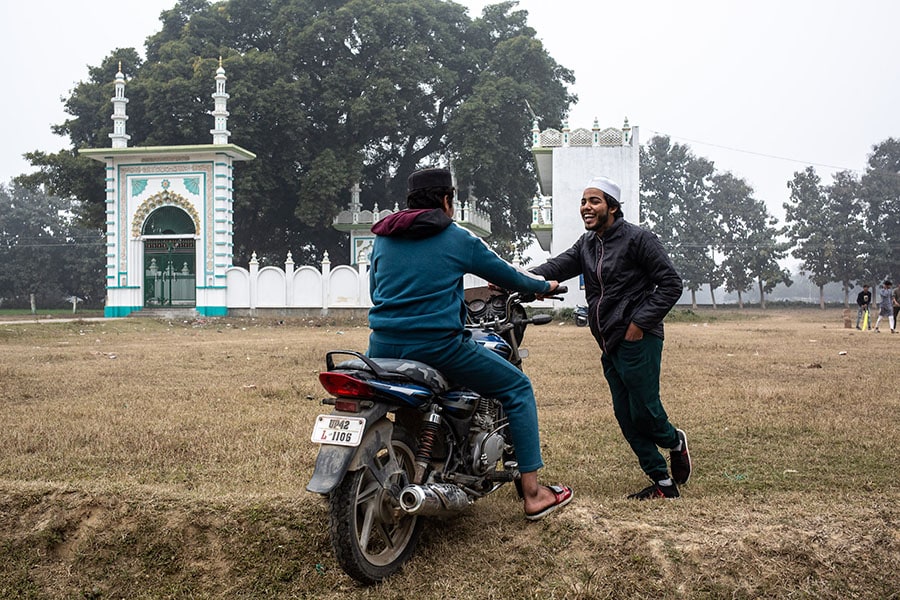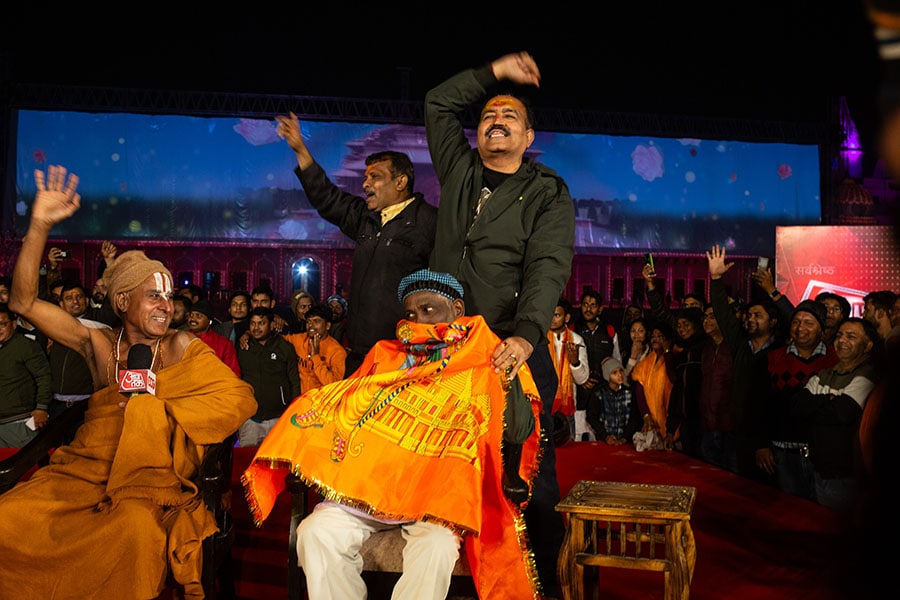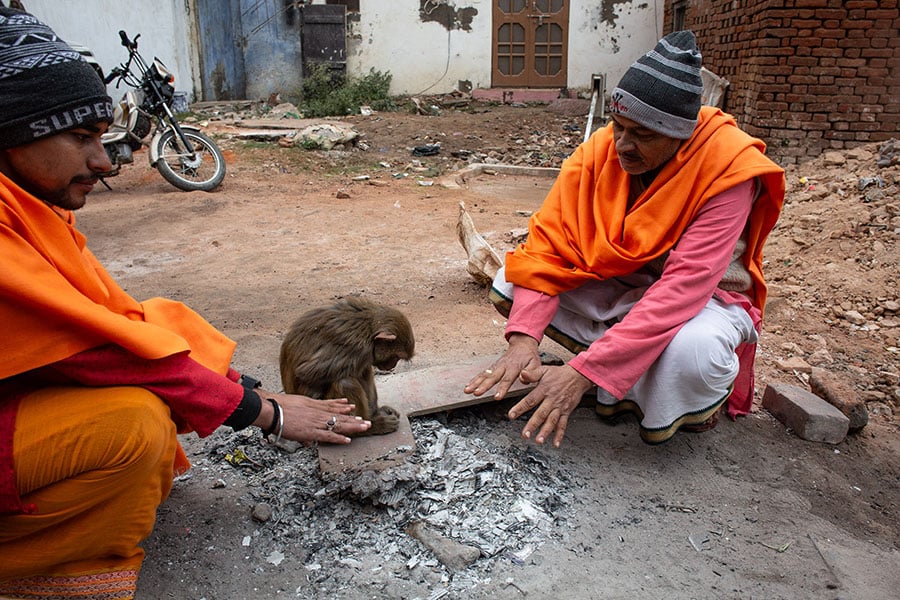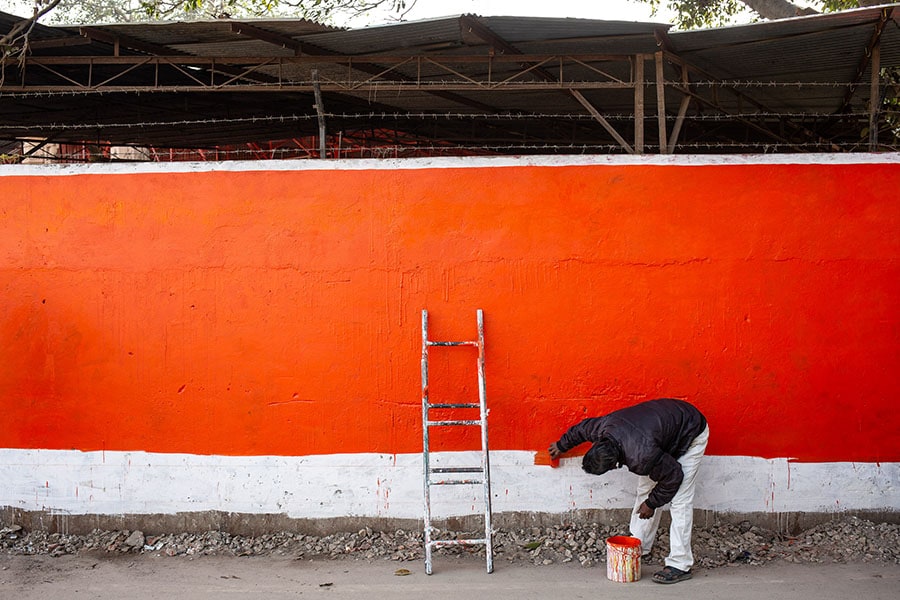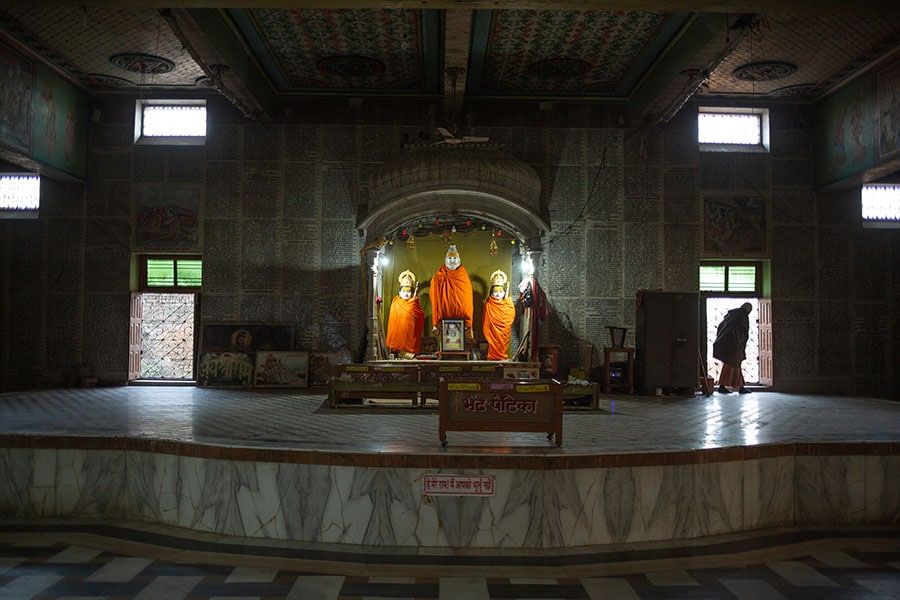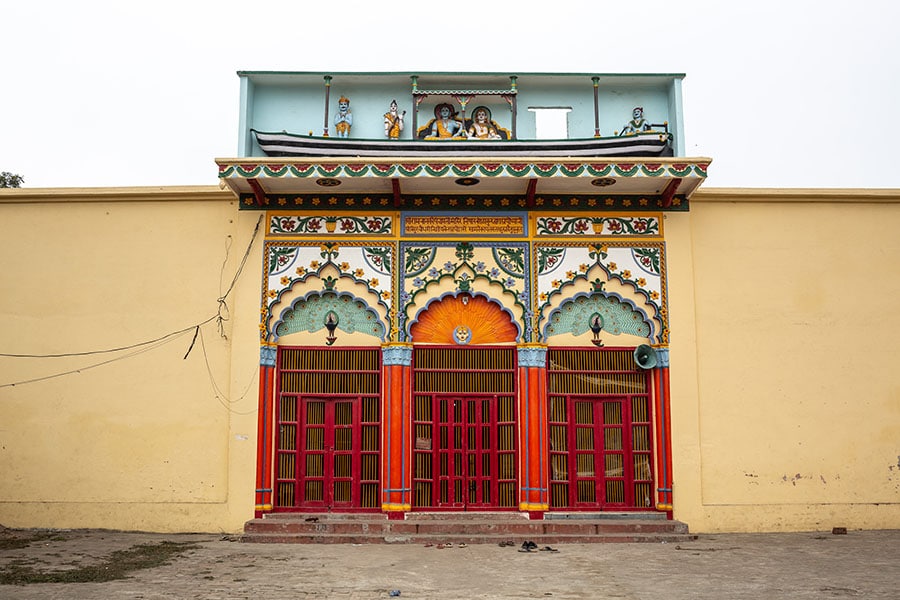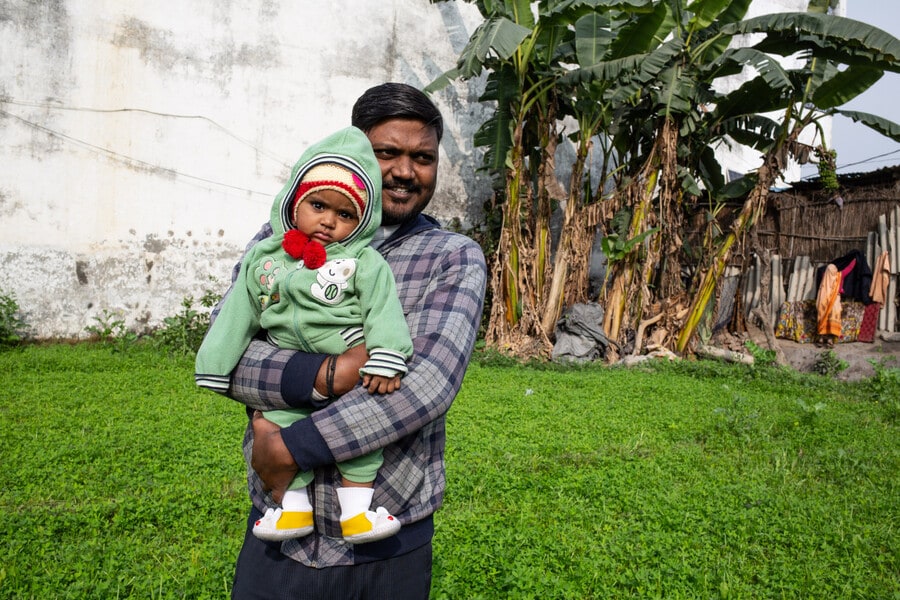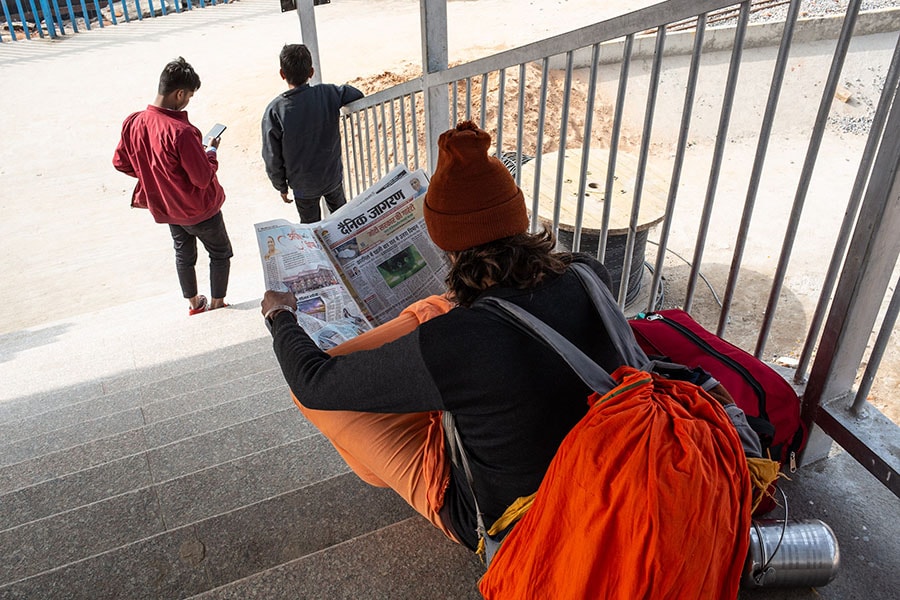
Ayodhya: An ancient city's new beginnings, in photos
Ayodhya's 500-year tumultuous legacy unmarred by the passage of time has come to pass with the consecration of a grand new temple to Ram Lalla. This is also a firm bet on a town's future potential in spiritual tourism, and to accelerate the fortunes of a temple town by the new devout
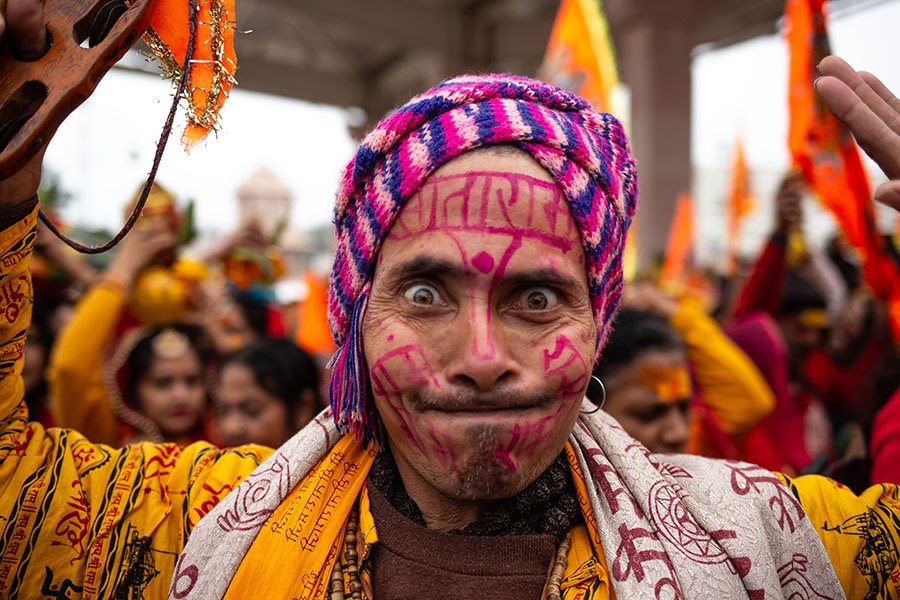 Photographs: Madhu Kapparath
Photographs: Madhu Kapparath
Taking the form of Hanuman, the monkey God, Baba Tarkeshwar Nath steps out from a procession at Ram Mandir, Ayodhya, on January 17, 2024. Hailing from Gopalganj in Bihar, Nath has been roaming around as Hanuman for twelve years. He recalls the day the monkey God entered his body at Hanuman Garhi temple and asked him to dedicate his life "in service to Ram."

Workers cement the dome of the Ram Mandir in Ayodhya a week before the consecration of the temple to the world. The establishment of the Mandir, at an estimated cost of Rs1,800 crore to house a God who has been under a tent in a makeshift temple at Rama’s birthplace in Ayodhya— after decades of political, street, academic and legal battles —has led to a collective feeling of triumph among many Indian Hindus.
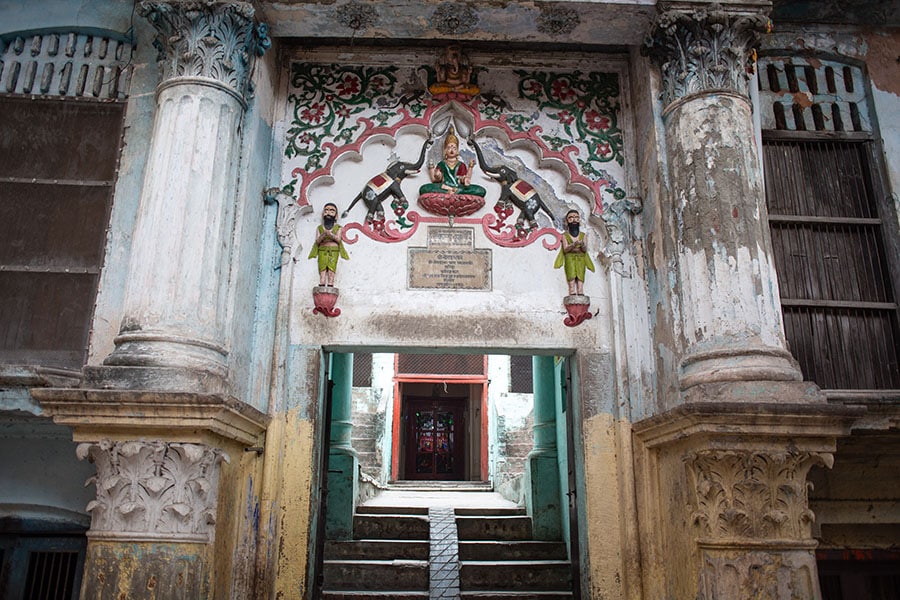
Step away from the clamour of the new temple, and the ancient town is littered with temples housing families or renunciates who live in them. Each of these temples, alive and evocative in atmosphere but in various states of architectural decay, opens inward into an open-to-sky courtyard and a sanctorum featuring Ram, Lakshman and Sita.
